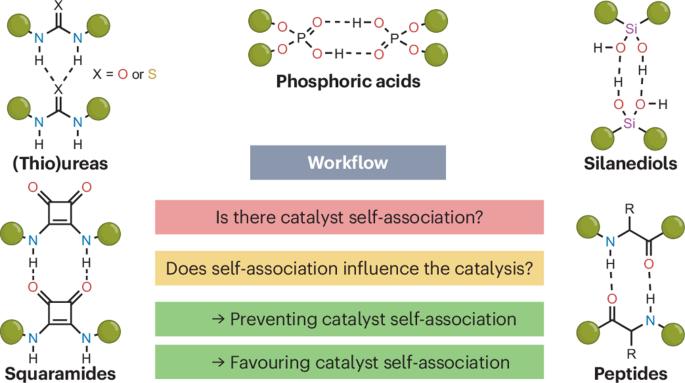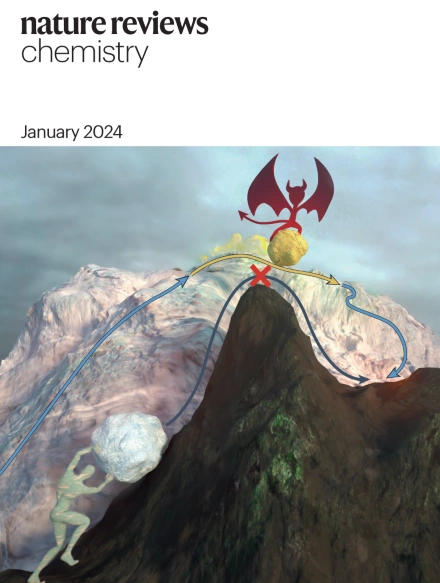The impact of supramolecular self-association of organocatalysts on catalytic performance
IF 51.7
1区 化学
Q1 CHEMISTRY, MULTIDISCIPLINARY
引用次数: 0
Abstract
Organocatalysis has emerged as a powerful tool in homogeneous catalysis, and especially in enantioselective catalysis. Importantly, the functional groups that are key to the reactivity of organocatalysts also allow for noncovalent interactions between catalyst molecules, both in the absence and in the presence of the reaction substrates. Such noncovalent interactions can lead to catalyst self-association, which can affect the catalytic behaviour of the respective organocatalyst, in terms of both reaction rates and enantioselectivities. In this Review, we present examples of such catalyst self-association in various organocatalysts, including ureas, thioureas, squaramides, peptides, silanediols and phosphoric acids. We analyse the known solid-state and solution-phase structures and discuss the influence of self-association in catalysis. We hope to illustrate the importance of catalyst self-association, which should be taken into account by practitioners of organocatalysis and catalyst designers. Non-covalent interactions between organocatalyst molecules can change catalytic behaviour, leading to changes in reaction rates and selectivities. This Review discusses how to identify such interactions, measure their effect on catalysis and ultimately how to avoid or exploit them in synthesis.

有机催化剂的超分子自缔合对催化性能的影响。
有机催化已成为均相催化,尤其是对映选择性催化的有力工具。重要的是,对有机催化剂的反应性至关重要的官能团也允许催化剂分子之间的非共价相互作用,无论是在没有反应底物的情况下还是在反应底物存在的情况下。这种非共价相互作用可以导致催化剂的自缔合,这可以影响各自有机催化剂的催化行为,在反应速率和对映选择性方面。在这篇综述中,我们介绍了各种有机催化剂中这种催化剂自缔合的例子,包括脲类、硫脲类、角酰胺类、多肽、硅二醇和磷酸。我们分析了已知的固相结构和固相结构,并讨论了自缔合在催化中的影响。我们希望说明催化剂自缔合的重要性,这应该被有机催化的实践者和催化剂设计者所考虑。
本文章由计算机程序翻译,如有差异,请以英文原文为准。
求助全文
约1分钟内获得全文
求助全文
来源期刊

Nature reviews. Chemistry
Chemical Engineering-General Chemical Engineering
CiteScore
52.80
自引率
0.80%
发文量
88
期刊介绍:
Nature Reviews Chemistry is an online-only journal that publishes Reviews, Perspectives, and Comments on various disciplines within chemistry. The Reviews aim to offer balanced and objective analyses of selected topics, providing clear descriptions of relevant scientific literature. The content is designed to be accessible to recent graduates in any chemistry-related discipline while also offering insights for principal investigators and industry-based research scientists. Additionally, Reviews should provide the authors' perspectives on future directions and opinions regarding the major challenges faced by researchers in the field.
 求助内容:
求助内容: 应助结果提醒方式:
应助结果提醒方式:


